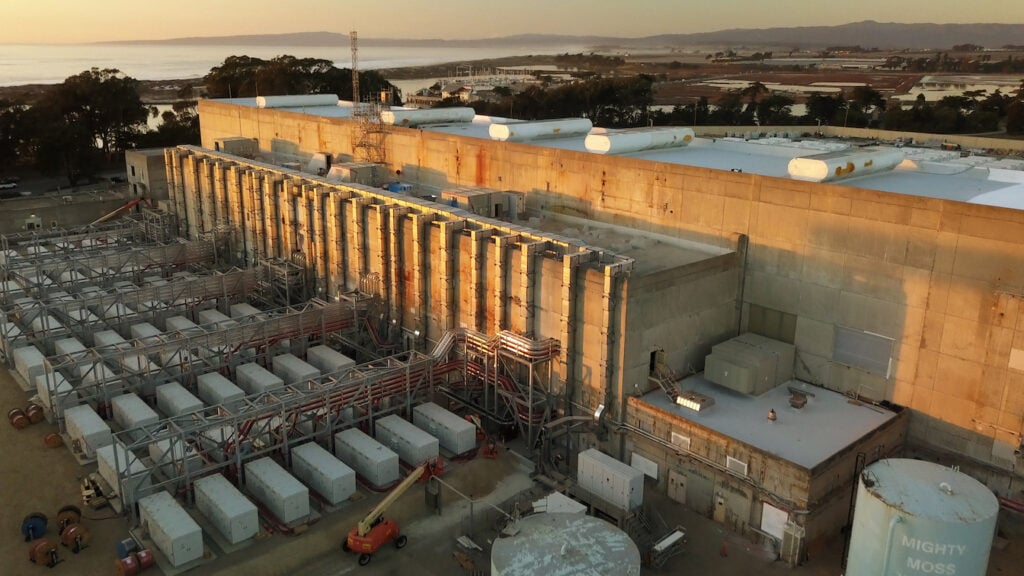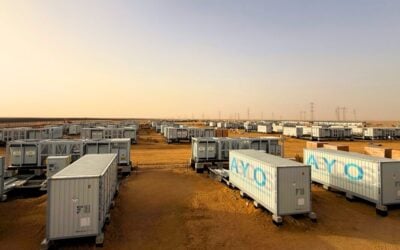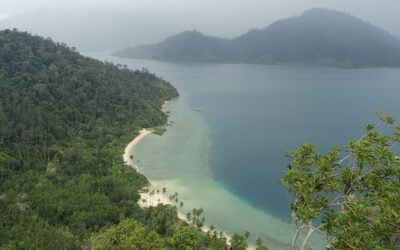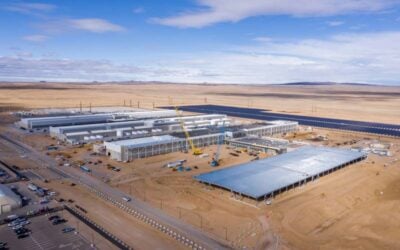
Vistra Energy will have more than 1,213MW of battery storage in operation in its portfolio by 2026, the US power generation company has claimed.
Vistra currently owns and operates the world’s largest battery energy storage system (BESS) project to date, the 400MW/1,600MWh Moss Landing Energy Storage Facility in California. Along with two large-scale BESS projects in Texas’ ERCOT market, the company has 670MW of battery storage in operation so far.
Enjoy 12 months of exclusive analysis
- Regular insight and analysis of the industry’s biggest developments
- In-depth interviews with the industry’s leading figures
- Annual digital subscription to the PV Tech Power journal
- Discounts on Solar Media’s portfolio of events, in-person and virtual
However, it is poised to add significant resources in other regions, with nine projects under development across the US’ MISO and PJM grid areas, as well as a 43.5MW project in development in California and a 350MW expansion phase at Moss Landing, which is already in construction.
Vistra discussed its project portfolio and pipeline in development as it released its latest quarterly financial results. The battery projects fall under the Vistra Zero initiative, through which the power company wants to commit to low-emissions energy projects.
Vistra has a 2,300MW nuclear facility, Comanche Peak, that went into service in Texas in 1990 and a portfolio of three operational solar PV projects and 10 in development that count towards Vistra Zero along with the BESS projects.
By 2026, Vistra expects to have around 7,300MW of that low-emissions portfolio online, including 1213.25MW of BESS. At present, its zero emissions fleet totals about 3,300MW, with the majority coming from Comanche Peak. By 2028, the company intends to have retired about 8,000MW of fossil fuel generation.
During the quarter just gone, Vistra celebrated Moss Landing Energy Storage Facility coming back online after several months out of action as the project experienced overheating issues at both the 300MW/1,200MWh Phase 1 and 100MW/400MWh Phase 2 systems.
Not far from Moss Landing, Vistra is also hoping to build a 600MW project in California’s Morrow Bay, although the company offered no firm updates on that project in its latest announcements.
It also brought online DeCordova Energy Storage, a 260MW/260MWh BESS in Texas, as well as two Texas solar PV plants, the 50MW Brightside Solar Facility and 108MW Emerald Grove Solar Facility. DeCordova is the largest BESS project in Texas to date.
Like the rest of the US industry, Vistra is waiting to see what the impact of the Inflation Reduction Act would be, if and when it passes into law soon, to assess if that will create additional opportunities for Vistra Zero investments. The Act includes a 30% investment tax credit (ITC) for standalone battery storage among its US$369 billion of commitments to tackling the climate crisis and energy security issues.
One region where it is already investing is Illinois, a historically coal-dependent state, where state authorities have enacted a plan to replace coal with solar and battery storage, a stance Vistra has previously applauded publicly.
With eight Illinois PV-plus-battery projects in MISO and one in PJM, Vistra has said Illinois lawmakers’ leadership is a strong example of how the post-coal energy transition can be facilitated.
Vistra makes its money from power generation and retail activities. In the second quarter, it recorded a net loss of US$1,357 million and net loss from ongoing operations of US$1,312 million. However the group delivered Q2 2022 ongoing operations EBITDA of US$761 million, which it said is in the upper range to deliver its guided EBITDA in ongoing operations for the year of US$2,810 million to US$3,310 million.
At the end of June 2022’s reported period, the company’s total available liquidity stood at around US$3,439 million.






